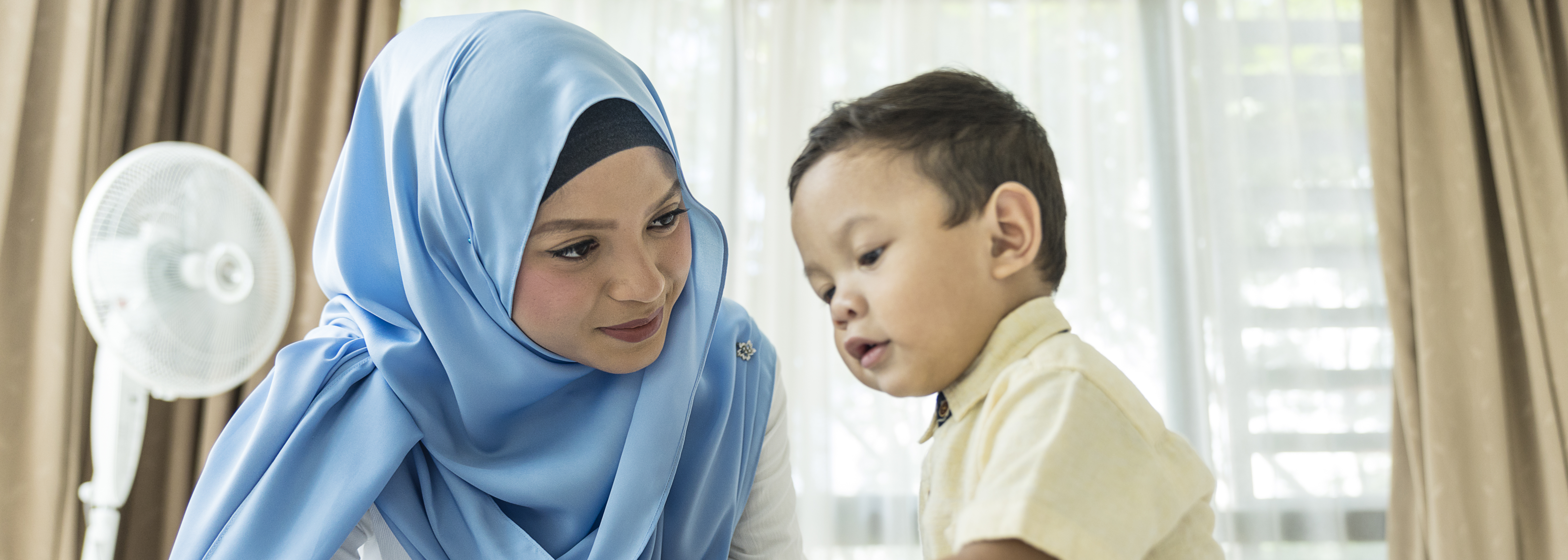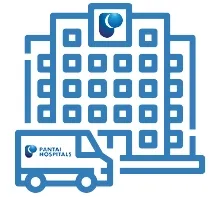Cerebral palsy (CP) is an umbrella term for a group of lifelong conditions that affect coordination and movement. These conditions are caused by brain abnormalities that develop before, during or soon after birth.
The Centers for Disease Control (CDC) reported an average prevalence of cerebral palsy is 3.3 children per 1000 live births.
The term ‘cerebral’ refers to the brain, and ‘palsy’ refers to the weakness or inability to use muscles.
Cerebral palsy is the most prevalent cause of childhood disability, but it does not necessarily lead to significant disabilities. While a child with severe cerebral palsy may be unable to walk and require considerable, lifelong care, another child with mild cerebral palsy may not require any particular support. The condition is not progressive and it does not worsen with time. Nevertheless, as the child ages, certain symptoms may become more or less apparent.
What are the types of cerebral palsy?
The types of cerebral palsy depend on the extent, location and type of abnormalities. The 4 main types of cerebral palsy include:
It is the most common type of cerebral palsy. People with spastic cerebral palsy have increased muscle tone (hypertonia). Their muscles may be stiff and tight, resulting in a reduced range of movement.
Spastic subtypes:
- Diplegia: Legs are more affected than the arms. People with spastic diplegia may have walking difficulties due to tight hip and leg muscles, which force their legs to pull together, turn inward, and cross at the knees (also known as scissoring).
- Hemiplegia: One side of the body. The arm is often more affected than the leg.
- Quadriplegia: Severe form of spastic cerebral palsy as it affects the face, limbs, and trunk. People with spastic quadriplegia are more likely to have significant intellectual disability, speech impairment, visual impairment, epilepsy, feeding difficulties or lung disease.
It is characterised by uncontrolled or involuntary muscle movements in hands, arms, feet, or legs that may be writhing and slow or rapid and jerky.
Occasionally, the face and tongue are affected, and the individual has difficulty sucking, swallowing, and speaking. The muscle tone of a person with dyskinetic cerebral palsy might vary not just from day to day but even within a single day.
It is a rare type of cerebral palsy, and the individual may have balance and coordination problems. They may need help with fast movements or movements that require a great deal of control, such as writing. They may have difficulty controlling their hands and arms when reaching for an object.
When an individual exhibits symptoms of more than one type of cerebral palsy.
What are the signs and symptoms of cerebral palsy?
The symptoms of cerebral palsy are not typically obvious right after the baby is born. It only becomes apparent during the first 2 or 3 years.
Infants with cerebral palsy usually have a developmental delay in which they attain their developmental milestones, such as learning to roll over, crawl, sit or walk slower than their peers. Some infants have decreased or increased muscle tone, which can make them appear floppy or rigid.
Additionally, children with cerebral palsy may have an atypical posture or favour one side of the body when reaching, crawling, or moving. It is crucial to remember that children without cerebral palsy may also exhibit some of these symptoms.
Following are some signs of cerebral palsy in a child:
- Stiff or floppy muscles
- Exaggerated reflexes
- Lack of coordination (poor balance, poor eye-hand coordination)
- Weak legs or arms
- Tremors
- Random and uncontrolled movements
- Muscle spasms
Other symptoms include:
- Difficulty walking or walking on tiptoes
- Feeding and swallowing difficulty
- Delayed speech development
- Seizure or fits
- Scoliosis (abnormally curved spine)
- Hip that dislocates easily
- Urinary incontinence
- Constipation
- Difficulty falling asleep
- Intellectual disabilities
- Visual problems such as reduced vision or uncontrollable eye movements
- Gastro-oesophageal reflux disease (GERD)
- Hearing loss
What are the causes of cerebral palsy?
Cerebral palsy is caused by a brain abnormality or damage to the parts of the brain that controls movement and this can occur before, during, or after birth.
Before birth:
- Periventricular leukomalacia (PVL) is a condition characterised by damage to the white matter of the brain, probably due to a decreased blood or oxygen supply to the brain
- An infection acquired from the mother, such as cytomegalovirus, chickenpox, rubella, or toxoplasmosis
- Stroke occurs when there is bleeding in the baby's brain or when the blood supply to the brain is blocked
- Head injury to an unborn infant
During or after birth:
- Asphyxiation during a difficult birth leading to a temporary lack of oxygen to the brain
- Brain infections such as meningitis
- Severe head injury
- Choking or near drowning, resulting in insufficient oxygen to the brain
- Stroke
- Extremely low blood sugar
What are the risk factors for cerebral palsy?
The following factors can increase a baby's likelihood of being born with cerebral palsy:
- Premature birth (before the 37th week of pregnancy) – babies born at 32 weeks or earlier are particularly vulnerable
- Low birth weight
- Twin or triplet
- Assisted reproductive technology (ART)
- Infections during pregnancy
- Jaundice and kernicterus - Jaundice is characterised by the yellow discolouration of the skin of newborns. Jaundice is caused by the buildup of bilirubin in a baby's blood. When a baby has an excess of bilirubin, the skin and whites of the eyes may appear yellow. This yellow discolouration is known as jaundice. When severe jaundice is left untreated for an extended period of time, it can result in kernicterus. This can lead to cerebral palsy and other conditions.
- Smoking, excessive consumption of alcohol and drugs such as cocaine by the mother during pregnancy
- Medical conditions of the mother such as thyroid conditions, seizures, or intellectual disability
- Birth complications such as uterine rupture, foetal distress
If your baby has a higher risk of developing cerebral palsy, your doctor may recommend regular check-ups throughout the first two years to look for symptoms.
How is cerebral palsy diagnosed?
A timely diagnosis of cerebral palsy is necessary to provide early intervention for your child. The doctor may request several tests to look for cerebral palsy or other possible causes of their symptoms.
The doctor may assess the following:
- Your child’s medical history and developmental milestones
- Symptoms of cerebral palsy
- Your child’s movement, coordination, and learning abilities
Tests:
- Cranial ultrasound scan
- Magnetic Resonance Imaging (MRI) – uses radio waves and magnetic fields to produce an enhanced image of the brain
- Computed Tomography (CT) scan – takes multiple X-ray pictures for a detailed image of the brain and skull
- Electroencephalogram (EEG) – monitors brain activity and looks for signs of seizures
- Electromyogram (EMG) – checks the muscle and nerve function
- Blood tests to rule out other conditions
Your child’s doctor may also consult other specialists to check for associated conditions such as:
- Vision impairment
- Hearing impairment
- Speech delays
- Intellectual disorders
- Feeding issues
Does cerebral palsy worsen with age?
Since cerebral palsy is caused by a brain abnormality that happens before, during, or after birth, the condition is not progressive. However, as the child ages, certain symptoms may become more pronounced.
- Increased muscle stiffness or atrophy; this may happen since the muscles may not be able to keep up with the bone growth causing muscular contractures
- Bone contractures due to lack of movement
- Shortened and spastic muscles may pull bony structures like the spine leading to scoliosis
- Pain in the spastic muscles
While the complications mentioned above may happen, parents and caregivers need to understand that regular therapy and strength exercises go a long way in maintaining the range of motion.
How is cerebral palsy treated?
Since there is no cure for cerebral palsy, the goal is to improve the patient's mobility and condition and prevent further complications.
These may include the use of:
- Eyeglasses and other visual aids
- Body and limb braces
- Walking and mobility aids like walkers, wheelchairs, etc
- Hearing aids
Various therapies have proven to be highly beneficial to patients with cerebral palsy. Some of these, when provided at an early age, have been known to give good improvements.
Various therapies that children with cerebral palsy may need are:
- Speech therapy
- Physical therapy
- Occupational therapy
- Neurodevelopmental Therapy (NDT)
- Recreation therapy
- Psychotherapy
- Sensory integration therapy
- Vision therapy
Medications help treat muscle stiffness and other related conditions such as epilepsy. Muscle relaxants such as baclofen, and tizanidine, may be given orally whereas Botox (botulinum toxin type A) can be injected into tight muscles to provide temporary relief.
Intrathecal baclofen is another technique where an implantable pump is placed within the body to deliver the medication.
Trihexyphenidyl (usually used to treat the symptoms of Parkinson's) is used in combination with other medicines to control involuntary movements.
Various surgeries may be needed by cerebral palsy patients to improve mobility. These include:
- Spine surgeries to correct scoliosis
- Bone and joint surgeries to improve contractures
- Surgeries such as Selective Dorsal Rhizotomy (SDR) that include sectioning nerves near the spinal base that cause excessive spasticity to a muscle group
- Percutaneous myofascial release surgery to release tight muscles
With the advancement in medical technology, many new-age treatment modalities are being tested. One of them is stem cell therapy but its potential to cure cerebral palsy is currently being researched.
What is the prognosis of cerebral palsy?
The life expectancy of people diagnosed with cerebral palsy depends on various factors and coexisting conditions. These include:
- Type of cerebral palsy
- Cognitive impairment
- Respiratory issues
- Sleep apnoea
- High-degree scoliosis, which may lead to the compression of organs
- Difficulty swallowing and eating
A study by NCBI reports the 30-year survival rate in persons with cerebral palsy is approximately 87%.
Advancements in medicinal research and new therapeutic approaches indicate a positive future for cerebral palsy patients.
As the world continues to understand more about this condition, cerebral palsy patients are bound to receive better care and facilities in the future.
Book an appointment at Pantai Hospitals
A dedicated and expert team of neurologists and paediatrics specialists at Pantai Hospitals is available for consultation to provide the best care and assistance to patients through neurological screening, diagnosis, and treatment.
Get in touch with us to book an appointment today if you have any concerns or questions about cerebral palsy.
Pantai Hospitals have been accredited by the Malaysian Society for Quality in Health (MSQH) for its commitment to patient safety and service quality.
References
- Capute and Accardo’s Neurodevelopmental Disabilities in Infancy and Childhood, Third Edition. Edited by Pasquale J. Accardo, MD. 2008, Paul H. Brookes Publishing Co, Baltimore, MD. p17.
- Honeycutt A, Dunlap L, Chen H, Homsi G. Economic costs associated with mental retardation, cerebral palsy, hearing loss, and vision impairment: United States, 2003. MMWR Morb mital Wkly Rep. 2004;53(3): 57-59, Available athttps://www.cdc.gov/mmwr/preview/mmwrhtml/mm5303a4.htm [Accessed 19 November 2022]
- Data and statistics for Cerebral Palsy, Available at https://www.cdc.gov/ncbddd/cp/data.html#references [Accessed 19 November 2022]
- Cerebral Palsy: Symptoms causes, types and treatment at Healthline, Available at https://www.healthline.com/health/cerebral-palsy#types [Accessed 19 November 2022]
- The life expectancy of persons with cerebral palsy, Available at https://pubmed.ncbi.nlm.nih.gov/7615144/ [Accessed 19 November 2022]
- Mixed cerebral palsy by Cerebral Palsy Guide, Available at https://www.cerebralpalsyguide.com/cerebral-palsy/types/mixed/#:~:text=Palsy%20Show%20More-,What%20Is%20Mixed%20Cerebral%20Palsy%3F,several%20parts%20of%20the%20brain [Accessed 19 November 2022]


 Request an Appointment
Request an Appointment.webp?sfvrsn=276ce14_1/vector-(3).webp) International Patient
International Patient

.webp)

 Find A Doctor
Find A Doctor



.webp?sfvrsn=20763f7d_21)
.webp?sfvrsn=f2a2c343_12)





